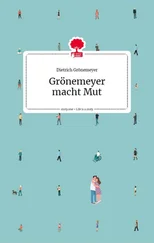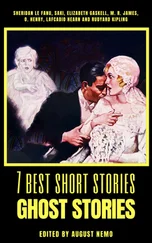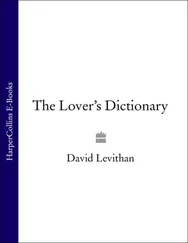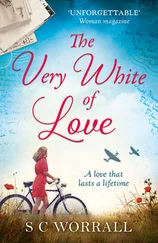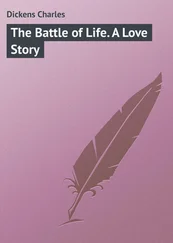Kennick restricted papers to five pages, because he thought that compression made for better thinking. Wallace, in thrall to his galloping mind, could not write short. One time Kennick had Wallace count the words in one of his papers and found he had squeezed five hundred onto each page, nearly double the norm. He gave Wallace an A-plus in the class anyway. Wallace for his part basked in Kennick’s affection.
Wallace liked comedy, and comic writing had come easily to him from childhood. So that semester he and Costello revived the campus humor magazine, Sabrina . From an office in the basement in Frost Library they put out several issues a year modeled on the Harvard Lampoon . The headquarters also served as an informal social club to gossip and postulate, an extension of their table in Valentine Dining Hall. The atmosphere was, appropriately, sophomoric. One member of the editorial team remembers a long discussion on whether women farted, with Wallace insisting they did not. The magazine itself was likewise often juvenile, but in its pages Wallace could satisfy his passion for parody, mimicry, and farce. In Sabrina , he wrote an advice column called “Ask Bill,” in which readers were invited to bring their questions to Professor Kennick. Bertrand Russell wrote in to reveal his crush on Alfred North Whitehead and ask what he should do. “Any relationship that depends for its security on the proposition that monistic atomism has anyrelevance to post-Enlightenment conceptions of phenomenological reality is not worth saving,” the Sabrina Kennick sternly replied. Most stories were collaborations, but Wallace revived his childhood love of Hardy Boys mysteries to write “The Sabrina Brothers in the Case of the Hung Hamster” himself:
Suddenly a sinister, twin-engined airplane came into view, sputtering and back-firing. It lost power and began spinning in toward the hill. It was heading right for the Sabrina brothers!
Luckily at the last minute the plane ceased to exist.
“Crikey!” exclaimed Joe. “It’s a good thing we’re characters in a highly implausible children’s book or we’d be goners!” 5
By spring semester Wallace and Costello were becoming well known on campus because of the magazine. Their table in Valentine began drawing a small but intense group of adherents. Nicknames had been a staple of his friendships in Urbana, and Wallace reveled in them here. He was “the Daver” and also “the Waller.” Costello was “Marcus Aurelius” for his first name, philosophical air, and high forehead; Nat Larson was “the Bumpster,” via the name “Natty Bumppo.” Corey Washington, Wallace’s friend from the debate team, was “Apple” or “the Reactor,” a play on “core reactor.” Eventually they were joined by Washington’s roommate Miller Maley, a wunderkind who had entered the school at twelve, Amherst’s youngest student in decades. Self-conscious about his iffy entry into puberty, Wallace liked having the younger Washington and Maley around. Washington was African American too, a distinct minority at the school, adding to the flavor of a table of refuseniks amid the mostly hail-fellow-well-met atmosphere of Amherst. In their undertrafficked corner of the dining hall, the conversation among the group bounced between social and sexual frustration, intellectual enthusiasm, and nerdy inquiry. Washington remembers the roving subjects as “Wittgenstein, the New Deal, Cantor, current politics, mathematical logic, Descartes, hot girls, Kant, etc.” They’d talk about classes, imaginary or hoped-for girlfriends, and weekend parties at the University of Massachusetts or Mount Holyoke College, where Amy Wallace now went.
Costello and Wallace were the twin centers of the group. Costello had authority, gravitas, and a boundless interest in the New Deal. Wallace was intense, with a brain that seemed to whirr faster than he could speak, and he was funny, shooting off clever comments and entertaining with his impressions. He had been in an economics course that semester. Did anyone want to see Friedrich Hayek hit on by a girl from Wilton, Connecticut? He could do his grandparents, his neighbors in Urbana, or Costello (when he wasn’t at the table). But his affection for his roommate was evident to all. Many people never saw the one without the other. To young Washington, their relationship was “like a marriage.”
His new popularity didn’t prevent Wallace from bearing down even harder in his studies. John Drew, another member of the circle, remembers an undercurrent of competitiveness in the group, of “a whole lot of score keeping and who’s the smartest.” That spring Wallace took the next installment of Kennick’s class, on early modern philosophy. This second unit began with Hobbes, continued through Locke, Berkeley, Hume, and finished with Kant. Wallace thrilled to (and had fun imitating) the announcement Kennick made when he got to the German idealist: “Fasten your seat belts. We’re going up!” He also took French again, metaphysics, and economics. In economics, Wallace had to try. He was good at theory, not calculation. But with his grade point average at risk, he worked ceaselessly at the subject and even won a prize for best undergraduate work in the discipline. Costello, also in the class, now had his moment of realization about the gifts of his roommate. Wallace got straight A-pluses that semester, spring 1983, his grades perfect. The depression of early 1982 was in the past, forgotten almost, even perhaps by him. When people would ask about why he had left school, he would not answer, or say vaguely that a friend had died and he had needed time away to get over it.
In May, Wallace returned home. He signed up for a summer logic class and another in calculus at the University of Illinois. He would study right through the summer break. But soon he was sorry. He wrote Washington that he just couldn’t focus while “the smell of flowers is in the air and the birds are singing and the pop of frosty Old Mil cans can be heard from the classroom window. I rose one day and said ‘No.’ That’s what I said.” In fact the reason may have been Susie Perkins — Wallace told friends the two were growing more deeply involved. He dropped calculus and contented himself with more logic classes, which he preferred to math anyway — in math he didn’t hear the “click.”
Home was not the place it had been. His father had spent the year alone, keeping a radio on for company. But nothing could tarnish Wallace’s exuberance. He was on a high and cocky, the smartest kid at Amherst. He felt raised up and vindicated. Early in the summer, he warned Washington, who was going to work at the particle accelerator at Stanford University, that he needed to get used to “dealing with, yes, living with, dull, unappealing people.” This brotherly advice was a sign of how far Wallace’s confidence had come back since his breakdown.
Though they lived apart, Wallace’s parents had not given up on their marriage and continued going to therapy. They now wanted the family to attend as a group. Wallace and Amy reluctantly agreed. Seeking to get to the root of the Wallace family’s dynamic, the therapist asked Amy to position the different members of the family in the room as she perceived them. She refused, drawing instead a schema of interlocking gears on the blackboard.
Afterward, Wallace was no less sour about the experience than he had been going in: “Marriage therapy degenerated into family therapy,” he would later write in The Broom of the System . “God knows what all went on.” He fictionalized the marriage therapist’s attempt to get Amy to draw images of how she saw her family into a scene in the novel in which Lenore’s sister’s family put on masks in a ritualized attempt to express their emotions, to the applause of a LaserDisc audience. Perhaps Wallace was angry because the therapy did not avert the formal dissolution of the family. Soon, Jim and Sally told the children they were getting divorced. But one day a month later, their mother was back in the house she had not been in for a year. The children didn’t ask what happened and the parents didn’t offer, Amy remembers.
Читать дальше


